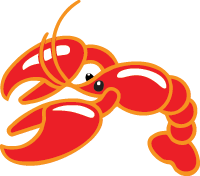What is the difference between a cook and a chef
In a world of social platforms whereby everybody claims to be an excellent chef or cook, and whilst shows like MasterChef showcase home cooks with exceptional skills, becoming a chef takes much more than just cooking a great meal for friends and family or entering a cooking show. It involves hard work, dedication, and a strong commitment to the culinary arts. Timing is crucial, especially when you have a menu as large as ours; it makes the difference between a dish being perfectly prepared to overcook within seconds.
Chefs typically undergo years of culinary education, training, and work experience in different kitchens, honing their skills to become professionals. While there are many talented cooks, they may not have the same training and experience as a chef. An example of this is the art of how to dice an onion or vegetable. There is the julienne cut, the matchstick cut, the brunoise dice/fine dice (the smallest dice, great for garnishes or salads), and the batonnet cut (you guessed it, great for French fries). I could go on, yet I think you get my point. Over 100 style cuts to learn, and when you see Chefs work at their speed, it is incredible to watch.
At Lobster Cave, our Executive Chef, Kris, brings a wealth of experience, passion, and talent to the kitchen, from his early years having learned from his grandmother in the streets of Bangkok, to years of cooking school, along with a deep passion and thirst for learning, makes him the Executive Chef he is today. I have so much respect for Kris and his team, as night after night, they prepare gastronomical dishes with a culinary team of nine. I have never heard him raise his voice to get any job done. It’s a simple response from his peers “Yes, Chef” Kris’s commitment to the Lobster Cave kitchen and staff is a testament to the person he is. One of the humblest humans you will ever meet. Kris runs the kitchen and his team of excellence like a symphony orchestra, with Kris being the conductor.
Preparing dishes at Lobster Cave is meticulous and extensive, catering to a nightly capacity of up to 200 covers. The attention to detail begins well before the cooking process, encompassing everything from ordering the freshest and highest quality ingredients to carefully storing them under ideal temperature conditions in fridges and freezers.
Daily stock is labelled and tracked precisely to ensure that nothing goes to waste, while strict food handling procedures are observed to meet the restaurant’s high hygiene standards. The kitchen staff’s hygiene is also of utmost importance, ensuring that everything remains clean and sanitary.
As a professional in the food industry, the kitchen is entrusted with the critical task of accommodating an ever-increasing number of patrons with dietary restrictions and food allergies.
Even after the restaurant closes, after-hours work may be required to prepare for the next day’s service or address any unforeseen issues.
The success of Lobster Cave’s dishes depends on the quality of the ingredients used. To this end, the restaurant goes to great lengths to ensure that only the finest produce arrives daily, meeting the exacting standards of Lobster Cave’s discerning clientele.
In conclusion, being a chef is a rigorous and demanding profession that requires much more than being a good cook. It requires years of training and experience, a strong commitment to culinary arts, passion and a willingness to take on multiple responsibilities beyond just cooking.
There is an old saying, “Never Trust a skinny Chef”, quoted from Australian chef Ian Hewitson. I now can prove this tongue-in-cheek reference 100% wrong as there is not much of our beloved humble Executive Chef Kris V.
As you wait for next Friday’s blog to hit, I leave you with one of Kris’s signature dishes served at the Lobster Cave daily. It is a simple dish to prepare and is a favourite seller. I am sure your friends and family will love it. Mine certainly do.
Our famous “Salt and Pepper squid” Give it a crack!
Salt and Pepper Squid
3 large (750g) cleaned squid hoods
Canola oil for shallow frying
Our home-made seasoning
1 1/2 tbsp freshly cracked peppercorn medley. (We use a Tasmanian brand)
1 ½ tbsp of compote peppers
1 tbsp salt flakes
1 tsp celery salt
2 tsp dried lemon zest
1 tsp Oregano
1 tsp Cajun spice
1 tsp Moroccan spice mix
Mix the above into 2 cups of “00” gluten-free flour, with 2 tbsp of cornstarch & 1 tbsp of potato starch
Lemon wedges to serve
Method
Cut each squid hood in half lengthways. Using a sharp knife, score inside in a criss-cross pattern.
Cut each piece in half lengthways. Cut each strip crossways into 4 pieces.
Or you can simply cut it into strips Pat dry with a paper towel.
Heat oil in a wok or saucepan over medium-high heat. Note: we do ours in a commercial deep fryer, and we flash fry.
Combine flour with spice mix in a shallow dish. Lightly toss the squid in the flour mixture, shaking off excess. Drop the squid into the hot oil. Be careful not to overcrowd the pan or wok. Cook, turning, for 2 minutes or until lightly golden. Be careful not to overcook. Transfer to a baking tray. Serve with lemon wedges and a house-made tartare sauce.
Best eaten straight away
Enjoy
For all your seafood needs, you can purchase from Ferg’s Fish in Hampton or Beaumaris;
Mention SuzieQ for a 10% discount.




